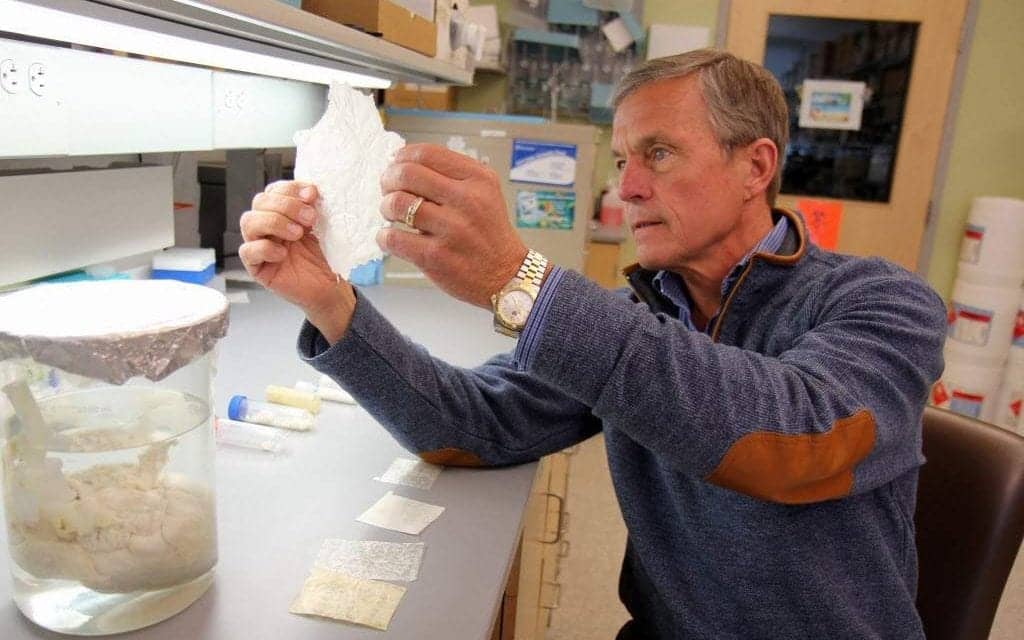In a recent research study funded by the United States Defense Department, thin sheets of scaffolding-like material from pigs implanted into several young men with disabling leg injuries coaxed the men’s own stem cells to regrow new muscle. The study included only five men, but the researchers described some of the men improving enough to no longer need canes or ride a bicycle after years of living with injuries, according to an Associated Press news report. The new experiment combined bioengineering with physical therapy to spur stem cells to turn into the right kind of tissue to repair it.
The Associated Press news report notes that surgeons first removed the scar tissue, then an “extracellular matrix” derived from pigs was implanted. The matrix temporarily fills in the injury between the edges of remaining muscle. Stephen Badylak, DVM, PhD, MD, who led the study, explains that as the scaffolding slowly degrades, it releases chemical signals that attract stem cells to the site. Physical therapy then puts tension on the spot, which signals the stem cells that they need to form strong muscle tissue.
Badylak adds that without the exercise, the cells would not receive the message to boost muscle mass and scar tissue could return. To prove this hypothesis, human testing was conducted with three military veterans and two civilians. The men underwent several months of customized physical therapy then received the implants. The participants then did physical therapy again that started within 48 hours after surgery.
The Associated Press news report indicates that 6 months later, biopsies and medical scans showed some new muscle grew in all of the men. Three patients were officially deemed a success because their legs were stronger by 20% or more after the surgery, while two other men had some improvement in quality of life and balance, but not enough to meet the study’s definition of success.
The Pittsburgh study is continuing, and Badylak would like to test as many as 50 more patients, according to the Associated Press news report. George Christ, PhD, of the Wake Forest Institute for Regenerative Medicine, says, “This strategy obviously has some merit. The concept of physical therapy coupled with these regenerative strategies is going to be really important.”
Photo Appears Courtesy of the University of Pittsburgh Medical Center
[Sources: Associated Press, TBO.com]





